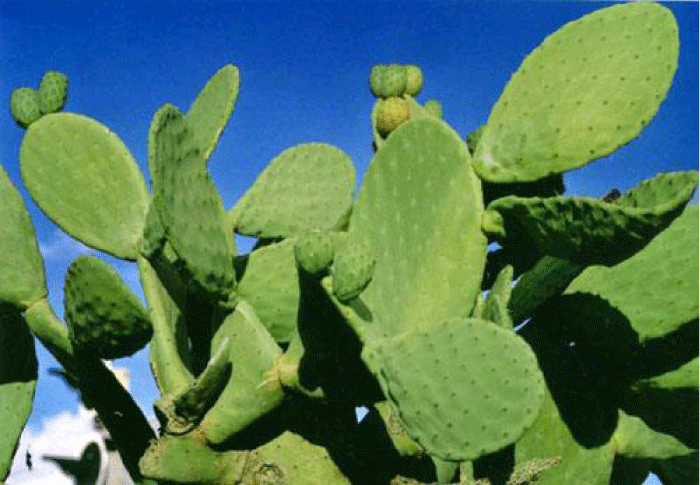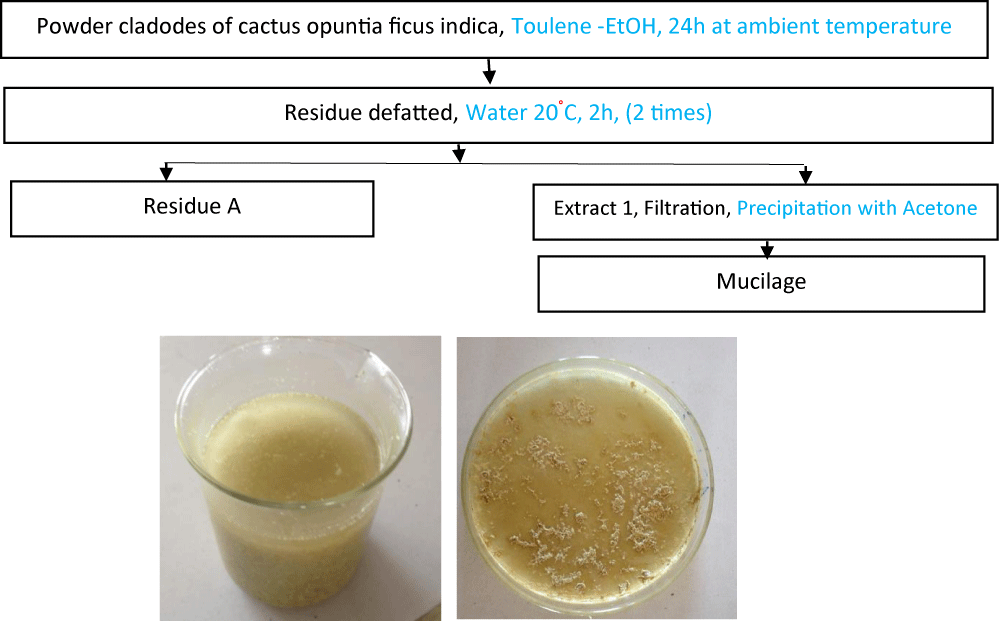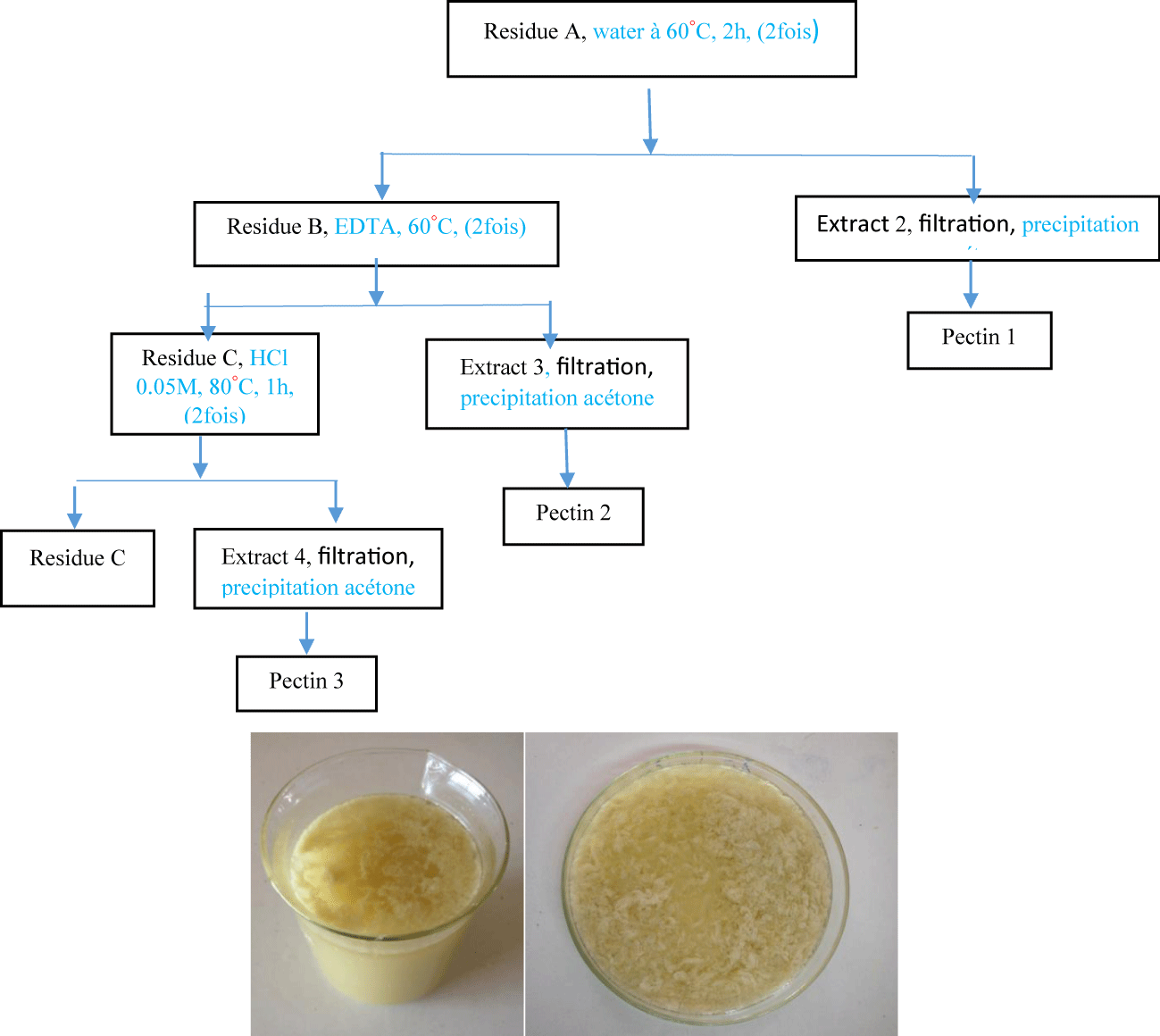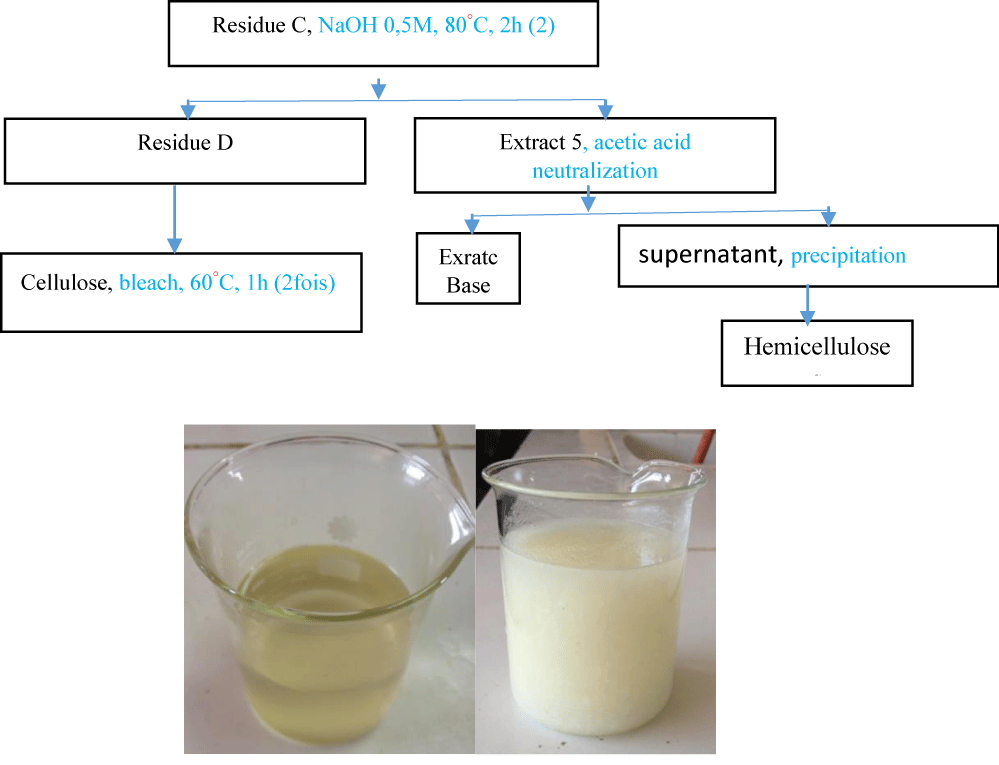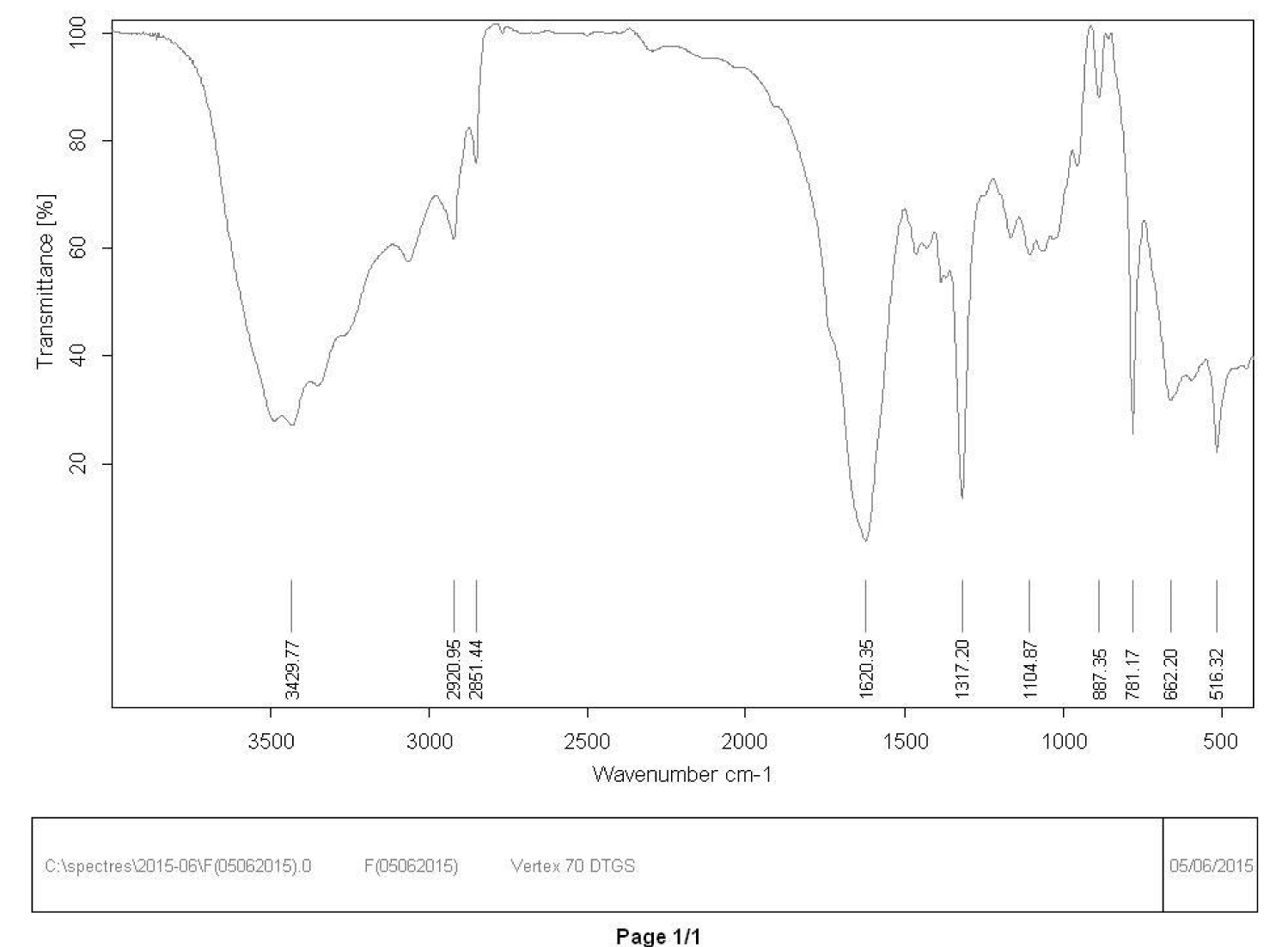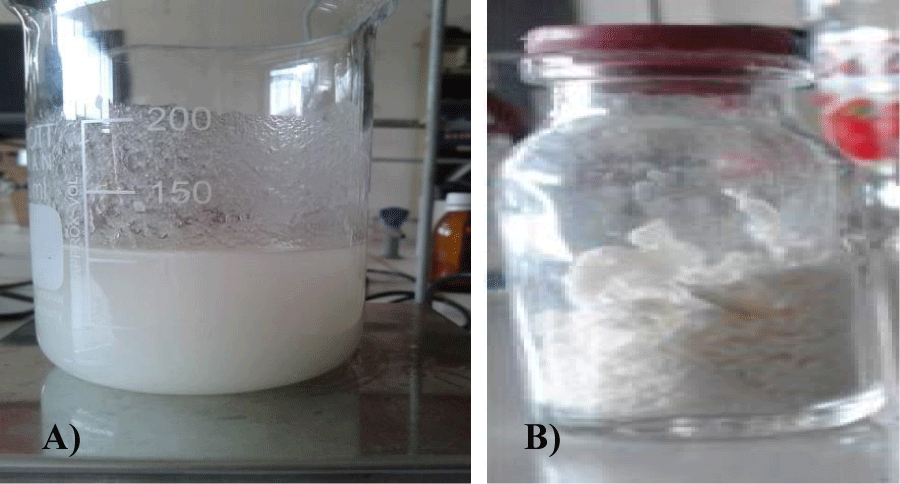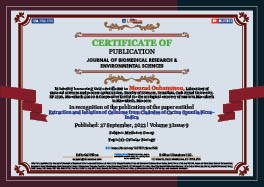Medicine Group . 2022 September 27;3(9):1108-1111. doi: 10.37871/jbres1562.
Extraction and Isolation of Cellulose from Cladodes of Cactus Opuntia Ficus-Indica
Mourad Ouhammou1,2*, Abderrahim Jaouad2, Mohamed Bouchdoug2 and Mostafa Mahrouz1
2Cooperative EcoVal for the ecological recovery of waste in Marrakech in Marrakech, Morocco
Abstract
Cellulose is the most abundant material in the earth, it is considered a renewable polymer of the cell walls of wood and plant cells, their interest and their use in different field is the purpose of extracting it namely: cellulose native (cotton), the transformation of cellulose into sheets (paper and filter paper), cupric cellulose, zinc cellulose (industrial applications), the functionalization of cellulosic materials in the field of printed electronics, textile, treatment, medicine, and agribusiness.
The objective of this study, is the extraction of cellulose at several stages and recovery of a waste based on old cactus rackets, type Opuntia ficus -indica smooth. The cellulose extracted showed good isolation, dispersion and purification of nanofibrils by the removal of oils, mucilage, pectins, hemicellulose and coloring substances. The substitution of ethanol by acetone in the extraction protocol used [1], gave suspensions of purified cell walls is well individualized, on the other hand the cellulose extracted from the beet pulp, chuck pulp prickly pear fruit peel requires a mechanical homogenizer.
Introduction
Cellulose is the material of tomorrow, because of the depletion of fossil resources through excessive use, we must think of substituting these with other renewable resources, the only alternative that is offered to us in the long term is to focus on the use of more abundant materials on earth, cellulose is one of the ubiquitous materials in nature, it is a very long-chain macromolecule stereoregular and belongs to the family of D-Glucoses, repetitive pattern cellobiose, this glucose polymer is the main structure of many plants. The content varies according to the plant species, from 40 to 50% in the wood and up to 95% in the cotton fibers [2], the production per year approximately 100 billion tons against 4 billion tons of crude oil [3]. Cellulose is a polysaccharide consisting of 95% glucose, it can be incorporated with other sugar such as galactose or xylose [4], in small quantities. These physico-chemical properties give it an industrial interest, it has regions that are crystalline (50% for wood, 60% cotton and 70% seaweed), these cellulose crystals are called "whiskers", and regions amorphous, which is to lead to intercrystalline swelling [5], also their property of the hydrogen bond gives it a mechanical strength [4], and solvate in some aqueous or non-aqueous solvents [6].
In this work the goal is to extract cellulose from old cladodes of Opuntia Ficus-Indica cactus. The sampling was made in an area located 40 km from the city of Marrakech, Morocco (Oulad Dlim), figure 1, the method used for the extraction is the same used in the case of the peel of the fig of barbarism, with the substitution of ethanol by acetone, for the precipitation of mucilage, pectins and hemicellulose. The replacement of ethanol with acetone a makes it possible to extract these three fractions well, with a good yield. The final residue is the cellulose was bleached with bleach at a temperature of 60°C, then washed with water and acetone, the yield is more than 50%. The cellulose is well purified, well dispersed and isolated in the form of microfibrils, the latter to obtain them it is necessary to carry out a homogenization, it is a mechanical process allowing the fractionation of particles in suspension [7]. This type of cellulose has a beneficial interest in several fields because of their degree of polymerization of microfibrils and their mechanical properties [8], especially in the medical field such as dressings, haemostatic and antimicrobial activity, surgical implants [3]. Oxidized cellulose such as bioresorption, adsorbents [9], chelation, ion exchangers, polyglucuronic acid (immunostimulatory properties), photoluminescent or conductive materials [10], and other applications such as nanomaterials for strengthening plastics, biosensors, and packaging, grafted cellulose to improve fire resistance [11], for wood coating [12].
Isolation of cellulose fibrils from old cladodes of cactus has several stages, after the extraction removal of mucilage, pectin and hemicellulose was analyzed by infrared and compare it with other source precursors.
Material and Methods
Material
The cladodes of cactus come from a rural area of Ouled Dlim, 40 km from Wilaya of Marrakech, Morocco, on the main road N° 9 linking the city of Marrakech and the city of El Jadida.
The rackets or cladodes are washed and cut laterally into two pieces (Figure 1), and dried in an oven at 60°C for 48 hours, the final mass is ten-hundredth of the initial mass, subsequently the rackets are ground until obtain a homogeneous powder. The raw material is ready to be processed by a series of treatment, sequential extraction of polysaccharides, mucilage, pectins, hemicellulose, and cellulose.
For chemicals are technical grade, usable at laboratory scale, toluene, ethanol, acetone, EDTA, HCl, NaOH, acetic acid, bleach, filtration on büchner.
Methods
Extraction of the mucilage: The cladode powder of cactus opuntia ficus indica is defatted with toluene and ethanol and then the filtrate is precipitated with acetone at room temperature according to this scheme (Figure 2).
Extraction of Pectins: The successive extraction of water-soluble pectins by a chelating agent of Ca2+, Ethylenediamine Tetra-Acetic Acid (EDTA) and hydrochloric acid, the three fractions of the pectins are precipitated by acetone after filtration according to the following mode (Figure 3).
Extraction of Hemicelluloses and Cellulose: Hemicelluloses are soluble polysaccharides in alkaline solutions, the extraction is by precipitation after solubilization in sodium hydroxide NaOH at 80°C. For the cellulose it is the final colored residue, it undergoes bleaching by bleach, two cycles then filtered and washed with distilled water according to the following diagram (Figure 4).
Result and Discussion
Analysis of cellulose by Fourier-Transform Infrared Spectroscopy (FTIR)
The infrared absorption spectrum (400-4000cm-1) of the cellulose in absorbance mode is carried out with a scan number equal to 32 scans, the cellulosic fraction consists essentially of microfibrils of cellulose, the infra-red spectrum to be shown : the presence of the alcohol OH band at 1317 cm-1 (between 1310 and 1420 cm-1), the CH band at 2919 cm-1 (from 2850 to 3000 cm-1), a band at 1620 cm-1 (between 1650 and 1740 cm-1) of the C = O bond, ketone or carboxyl acid, which means that this fraction is impure it still contains residual acidic sugars probably esterified during extraction [13].
Figure 5 also shows that the infrared spectrum a band at 3429 cm-1 (3000 to 3500 cm-1) due to the presence of polymorphic cellulose crystals, Shou Hiasa. 2014, specifically ordinary cellulose is well known by the presence of the peaks at 3270 cm-1 and 3240 cm-1, respectively, Sugiyama. 1991, the band was also noticed for cellulose extracted from mandarin, rich in polymorphic type crystals (Figure 6).
Conclusion
The cellulose obtained from cladodes of cactus opuntia ficus indica, is a material of chemically and visually consists of cellulose microfibrils, in suspensions are very stable in water, and very important characteristics and promising for the industry is similar to that extracted from the sugar beet according to Alain Dufresne, and the mandarin peel by Shou Hiasa, 2014, the prickly pear peel, Youssef HABIBI, 2002, the spines of cladodes of cactus, Mohamed E. Malainine, 2003 and and hydrolysis of lignocellulosic biomass by Hongling Wang.2022.
The procedure used to extract different polysaccharides, mucilage, pectins, hemicellulose and cellulose keeping the physicochemical properties, gelling for pectins, insulating for mucilage and hemicellulose and rheological for cellulose.
References
- Youssef Habibi. Contribution à l’Etude Morphologique, Ultra Structurale et Chimique de la Figue de Barbarie, les Polysaccharides Pariétaux : Caractérisation et Modification Chimique. 2004.
- Mathieu Mazza. Modification chimique de la cellulose en milieu liqu ide ionique et CO2 supercritique. 2009.
- Service communication délégation Alpes du CNRS : "La cellulose : matériau de demain", Pascale Natalini.
- KhennaouI Badis. Etude, synthèse et obtention de matériaux Composites à partir de Cellulose de Polyacrylamide et de Polystyrène. 2009.
- E Chanliaud. Extraction, caractérisation et propriétés fonctionnelles des hétéroxylanes de son de maïs", Thèse de doctorat n° 1995EIAA0043, ENSIA, Université Paris XI, Université Paris VII, pp129, 1995.
- Isogai A. Wood and cellulosic chemistry, 2nd Ed, revised and expanded, Ed. DNS Hon N Shiraishi, chap 14, Chemical modification of cellulose, pp599-625, 2000.
- Nakagaito AN, Yano H. Novel high-strength biocomposites based on microfibrillated cellulose having nano-order-unit web-like network structure. Applied Physics. 2003;80:155-159.
- Aidoud A. Les parcours à alfa des hautes plaines algériennes. Variation inter-annualle et productivitè. 4eme CITP, Mentpellier (France). 1991;198-199.
- Rachid Bouhdadi. Cellulose acylation by 3-pyridinoyl chloride hydrochloride: Application to lead Pb2+ adsorption. Comptes Rendus Chimie. 2011;14:539-547.
- Olivier PRAS. Utilisation de cellulose pour l’élaboration de matériaux photoluminescents ou conducteurs. 2011.
- KeKe Zhang. Improve the flame retardancy of cellulose fibers by grafting zinc ion, Carbohydrate Polymers. 2016;136:121–127.
- Bouddah Poaty. Modification of cellulose nanocrystals as reinforcement derivatives for wood coatings, Progress in Organic Coatings. 2014;77:813–820.
- Hongling Wang, Xianghui Qi, Chanson Gao, Yifeng Zhang, Yingfeng Un. Biochemical characterization of an engineered bifunctional xylanase/feruloyl esterase and its synergistic effects with cellulase on lignocellulose hydrolysis. Bioresource Technology. 2022;355. doi: doi.org/10.1016/j.biortech.2022.127244.
Content Alerts
SignUp to our
Content alerts.
 This work is licensed under a Creative Commons Attribution 4.0 International License.
This work is licensed under a Creative Commons Attribution 4.0 International License.





